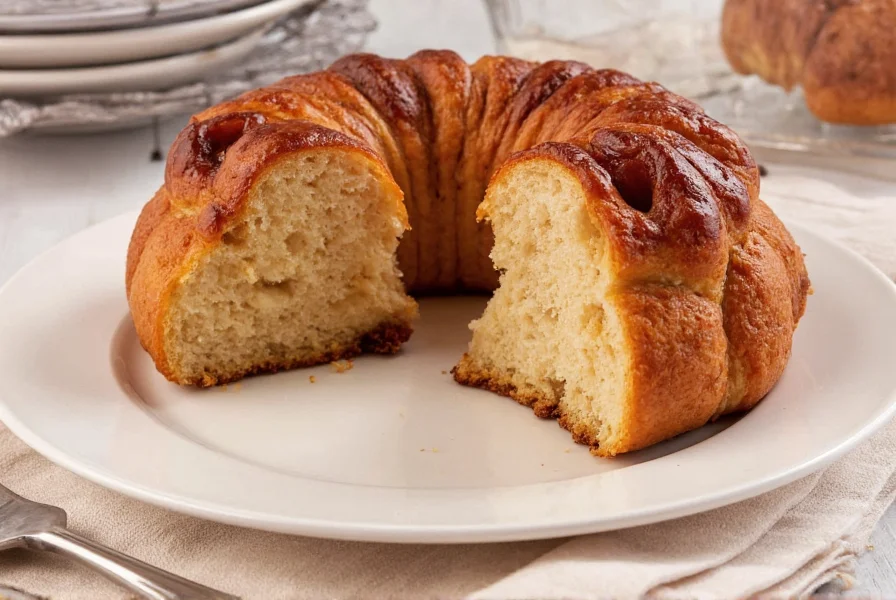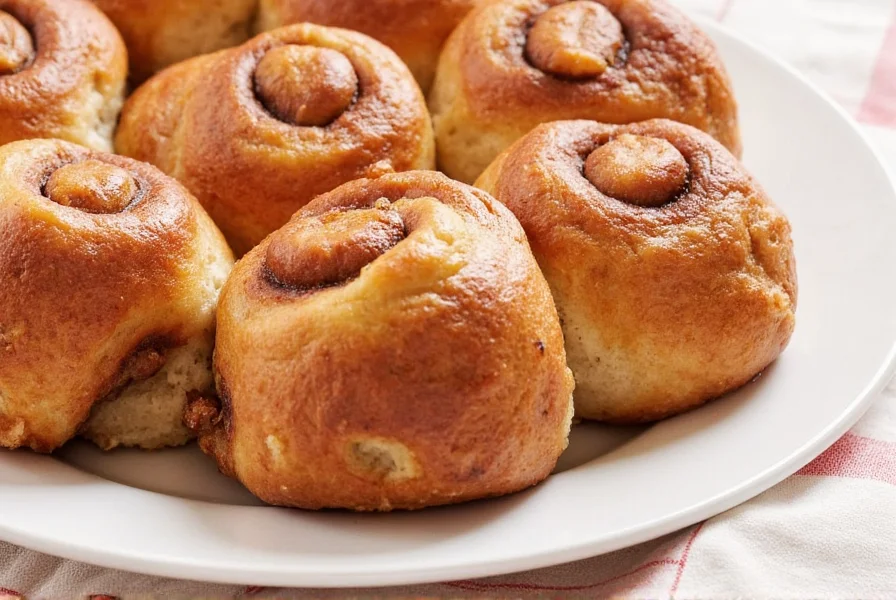Monkey bread with cinnamon rolls has become a beloved shortcut recipe that transforms store-bought cinnamon roll dough into an impressive pull-apart pastry. This clever adaptation maintains all the sticky, sweet characteristics of traditional monkey bread while eliminating the lengthy rising process required for yeast-based versions. The result is a soft, gooey treat perfect for breakfast, brunch, or dessert that comes together in under 30 minutes of active preparation.
The Evolution of a Classic Treat
Traditional monkey bread originated as a Hungarian pastry called "arany galuska" (meaning "golden dumplings"). Bakers would coat small balls of yeast dough in butter, cinnamon, and sugar before arranging them in a Bundt pan. As the bread baked, the sugar and butter created a caramelized crust while the interior remained tender.
The cinnamon roll version emerged as home bakers sought quicker alternatives to the time-intensive original. By substituting refrigerated cinnamon roll dough for homemade yeast dough, they discovered they could achieve remarkably similar results with dramatically less effort. This adaptation gained popularity through community cookbooks and eventually became a staple at potlucks and holiday gatherings across America.
Essential Ingredients for Cinnamon Roll Monkey Bread
The beauty of this recipe lies in its simplicity. You'll need just a few basic ingredients beyond the cinnamon roll dough itself:
| Ingredient | Quantity | Purpose |
|---|---|---|
| Canned cinnamon rolls with icing | 2 cans (8 rolls total) | Base dough and flavor foundation |
| Granulated sugar | 1/2 cup | Creates additional caramelized coating |
| Ground cinnamon | 1-2 teaspoons | Enhances cinnamon flavor profile |
| Unsalted butter, melted | 1/4 cup | Helps sugar adhere and creates gooey texture |
| Pecans or walnuts (optional) | 1/2 cup chopped | Adds texture contrast and nutty flavor |
Step-by-Step Preparation Guide
Creating perfect monkey bread with cinnamon rolls requires attention to detail at each stage. Follow these instructions for optimal results:
- Preparation: Preheat your oven to 350°F (175°C). Generously grease a 10-12 cup Bundt pan with butter or non-stick spray, ensuring all crevices are coated.
- Creating the coating: In a small bowl, combine melted butter, sugar, and cinnamon. If using nuts, stir them into the mixture.
- Preparing the dough: Separate each cinnamon roll into individual pieces. Cut larger rolls into quarters or smaller pieces for more pull-apart sections. Dip each piece into the butter-sugar mixture, ensuring complete coverage.
- Arranging in pan: Place coated dough pieces randomly in the prepared Bundt pan, filling from the bottom up. Alternate directions to create air pockets that allow even baking.
- Baking: Bake for 28-35 minutes until golden brown and fully cooked through the center. A toothpick inserted should come out clean. The exact time will vary based on your oven and pan size.
- Finishing: Let cool in pan for 5-7 minutes, then invert onto a serving plate. While still warm, drizzle with included icing or a homemade caramel glaze.
Proven Techniques for Perfect Results
Professional bakers recommend these evidence-based techniques to elevate your cinnamon roll monkey bread:
- Dough temperature matters: Work with chilled dough straight from the refrigerator for cleaner handling and better shape retention
- Sugar distribution: Layer additional sugar-cinnamon mixture between dough pieces for more consistent flavor throughout
- Pan preparation: Use a light-colored metal Bundt pan rather than dark non-stick for more even browning
- Don't overfill: Leave at least 1 inch of space at the top of the pan to accommodate rising during baking
- Testing doneness: Check internal temperature with a thermometer - it should reach 190°F (88°C) at the center
Popular Variations to Explore
Once you've mastered the basic recipe, try these creative adaptations that maintain the essential cinnamon roll monkey bread characteristics while adding new dimensions:
- Caramel pecan version: Replace half the sugar with brown sugar and add 1/4 cup caramel sauce to the butter mixture
- Apple cinnamon twist: Add 1/2 cup finely diced apple to the sugar coating mixture for fruit-infused flavor
- Chocolate drizzle: Mix 2 tablespoons cocoa powder into the sugar coating and top with chocolate ganache
- Overnight preparation: Assemble the coated dough in the pan, cover, and refrigerate overnight before baking
Troubleshooting Common Issues
Even experienced bakers encounter challenges with monkey bread. Here's how to address frequent problems:
- Sticking to the pan: Ensure thorough greasing with butter (not just spray) and allow proper cooling time before inverting
- Dry texture: Don't overbake - check 5 minutes before recommended time. The bread should feel slightly springy but not firm
- Uneven cooking: Rotate the pan halfway through baking and arrange dough pieces with varying orientations
- Runny icing: Let the bread cool slightly before adding icing to prevent excessive melting and dripping
Serving and Storage Recommendations
For optimal enjoyment, serve monkey bread warm when the caramelized sugar coating is still slightly gooey. Pair with coffee, tea, or cold milk for a perfect flavor contrast. Leftovers (if any remain) can be stored in an airtight container at room temperature for up to 2 days.
For longer storage, refrigerate for up to 5 days or freeze individual portions. To refresh, microwave single servings for 15-20 seconds or warm in a 300°F oven for 10 minutes. Avoid reheating the entire loaf as this can make the exterior too crisp while the center remains cold.

Frequently Asked Questions
Can I make monkey bread with cinnamon rolls without the icing?
Yes, you can omit the included icing. For a homemade alternative, combine 1 cup powdered sugar, 2 tablespoons milk, and 1/2 teaspoon vanilla extract. This creates a thinner glaze that penetrates the bread better than the thick store-bought version.
How do I prevent my monkey bread from becoming too dense?
Avoid overpacking the Bundt pan and ensure dough pieces are arranged with spaces between them. Cutting the cinnamon rolls into smaller pieces (about 1-inch) creates more air pockets that allow the bread to rise properly during baking.
What's the best way to reheat leftover monkey bread?
For single servings, microwave for 15-20 seconds. For the entire loaf, wrap loosely in foil and warm in a 300°F oven for 10-15 minutes. This method preserves moisture better than microwave reheating while restoring the soft, gooey texture.
Can I use gluten-free cinnamon rolls for this recipe?
Yes, gluten-free cinnamon roll dough works well for monkey bread. You may need to reduce baking time by 3-5 minutes as gluten-free products often cook faster. Check for doneness starting at 25 minutes to prevent overbaking.











 浙公网安备
33010002000092号
浙公网安备
33010002000092号 浙B2-20120091-4
浙B2-20120091-4